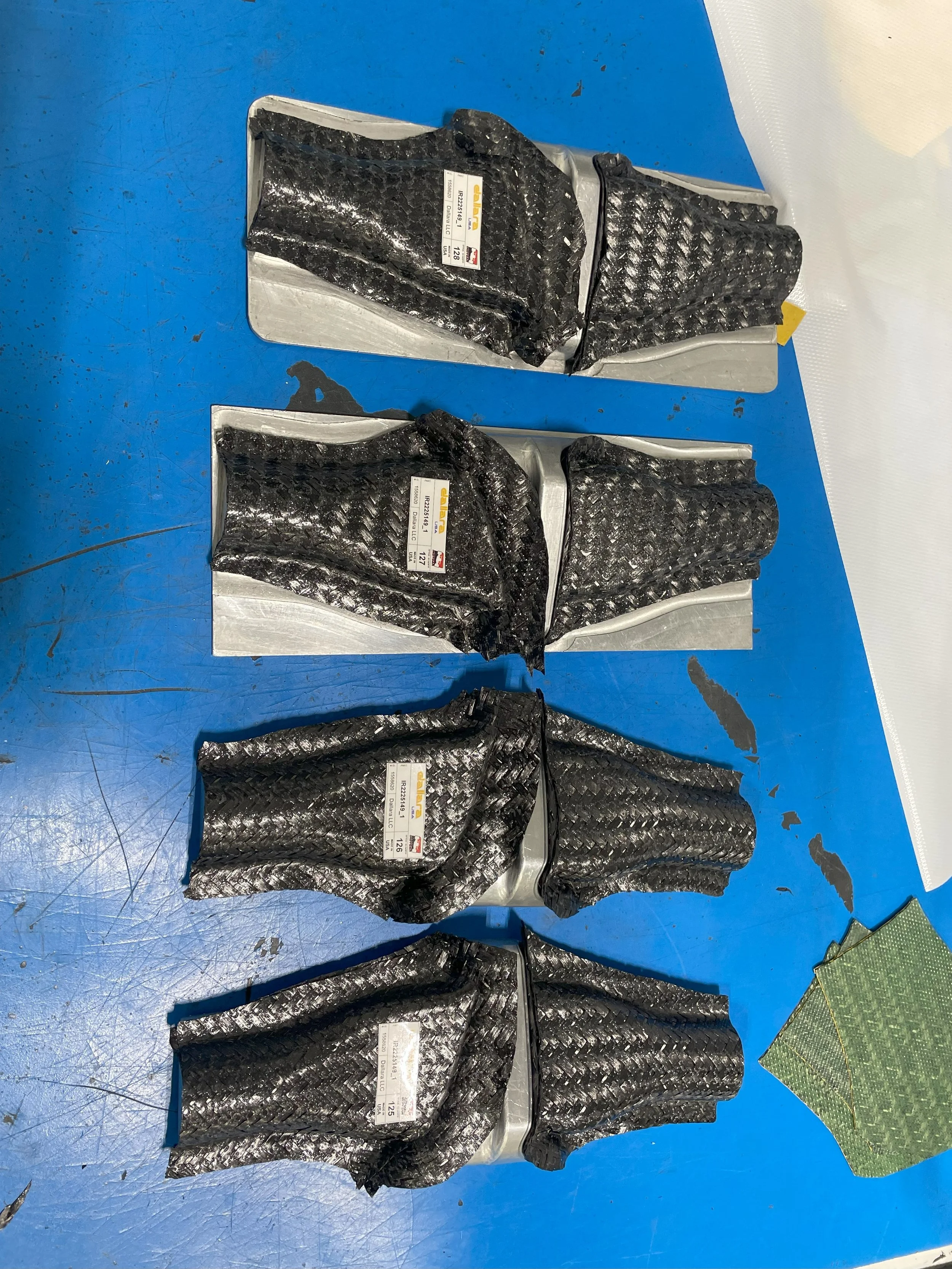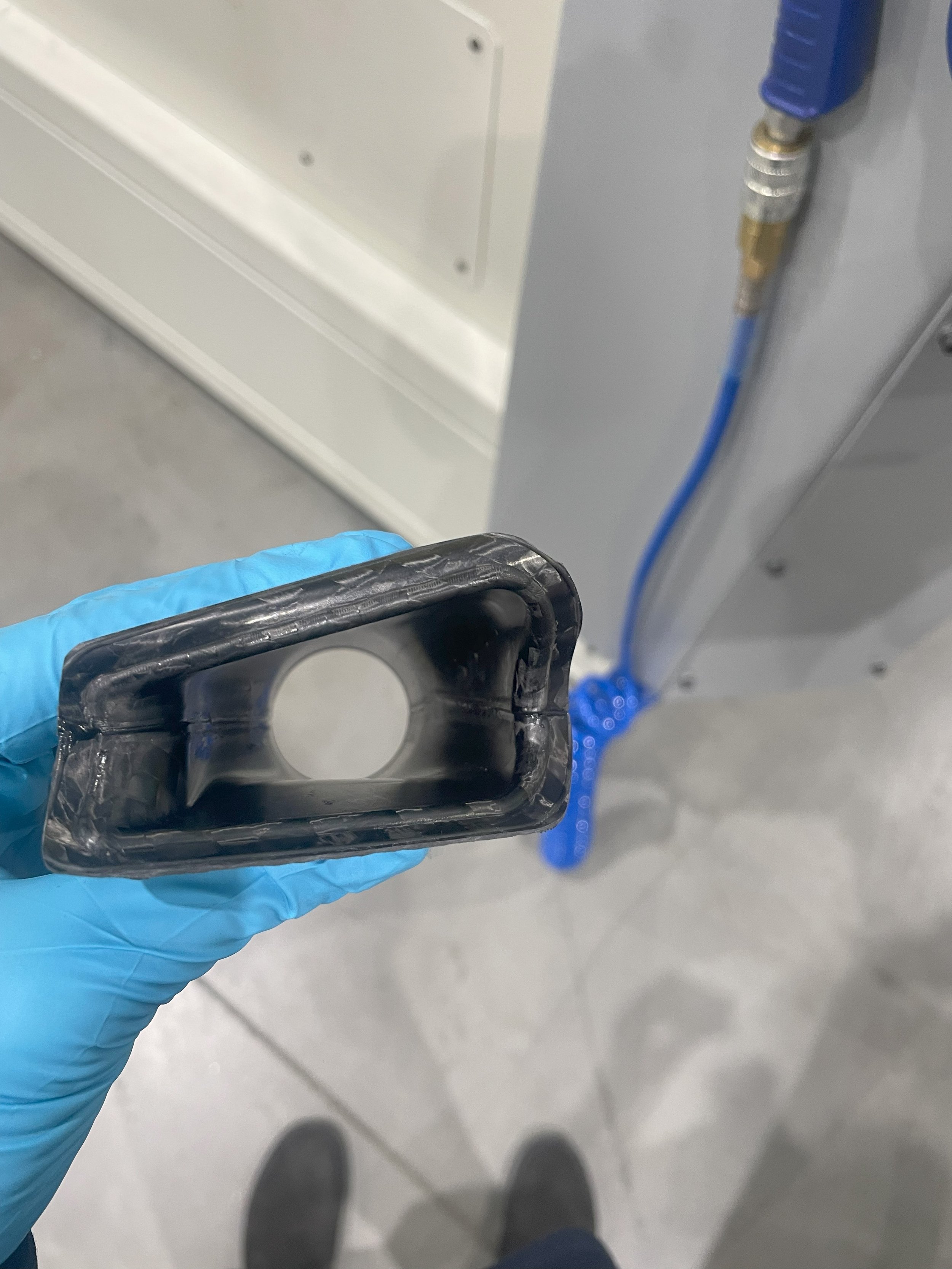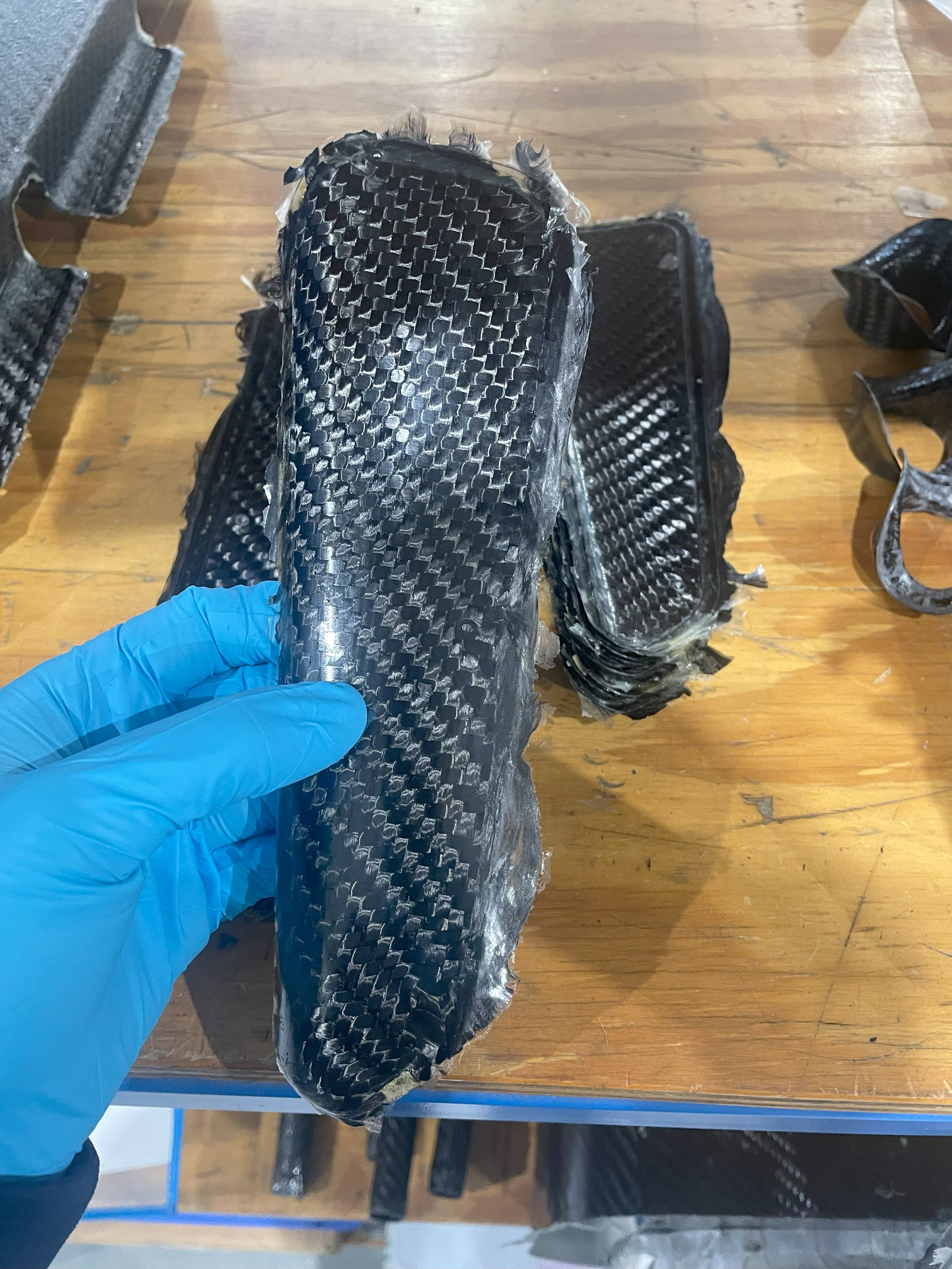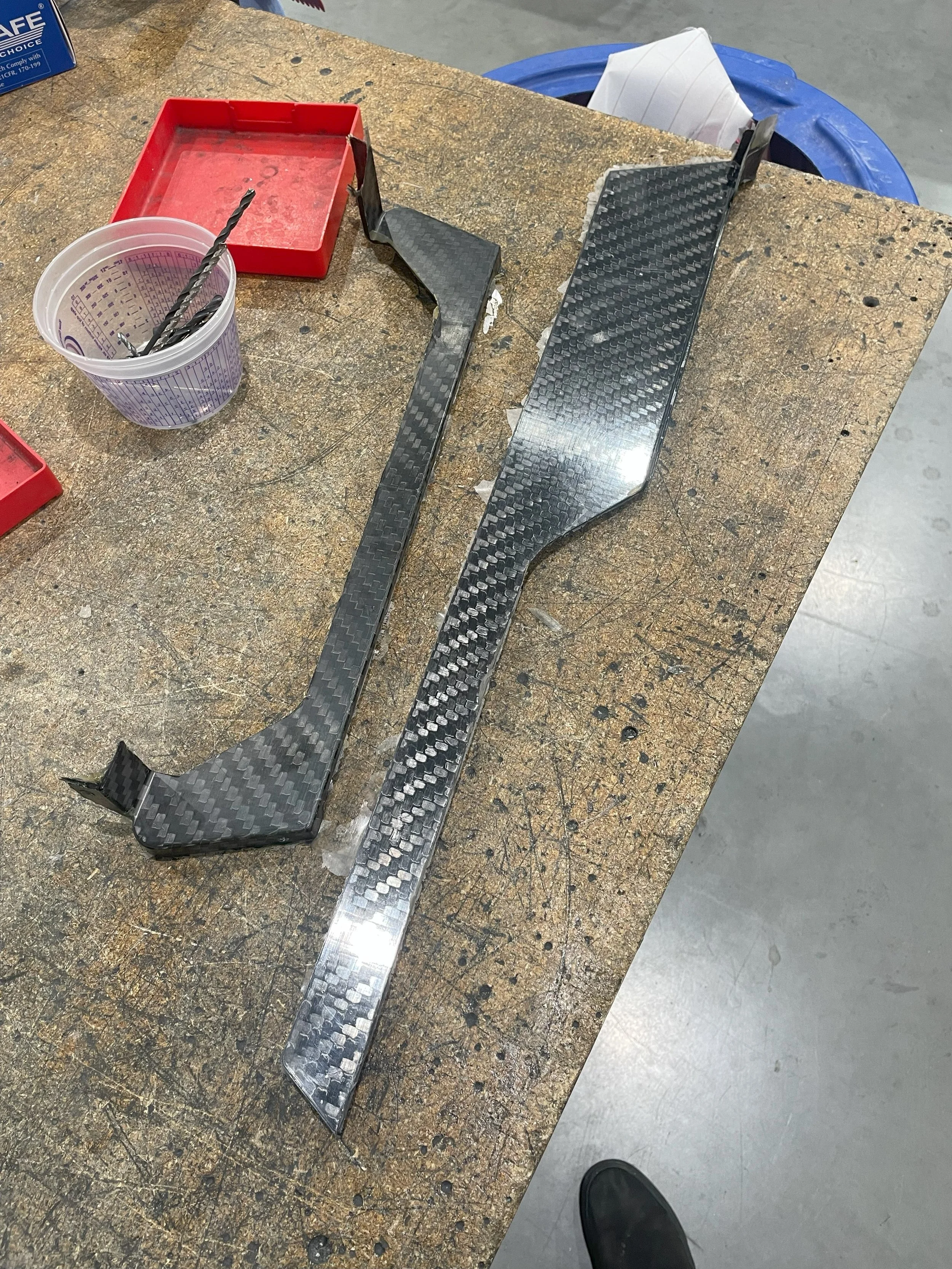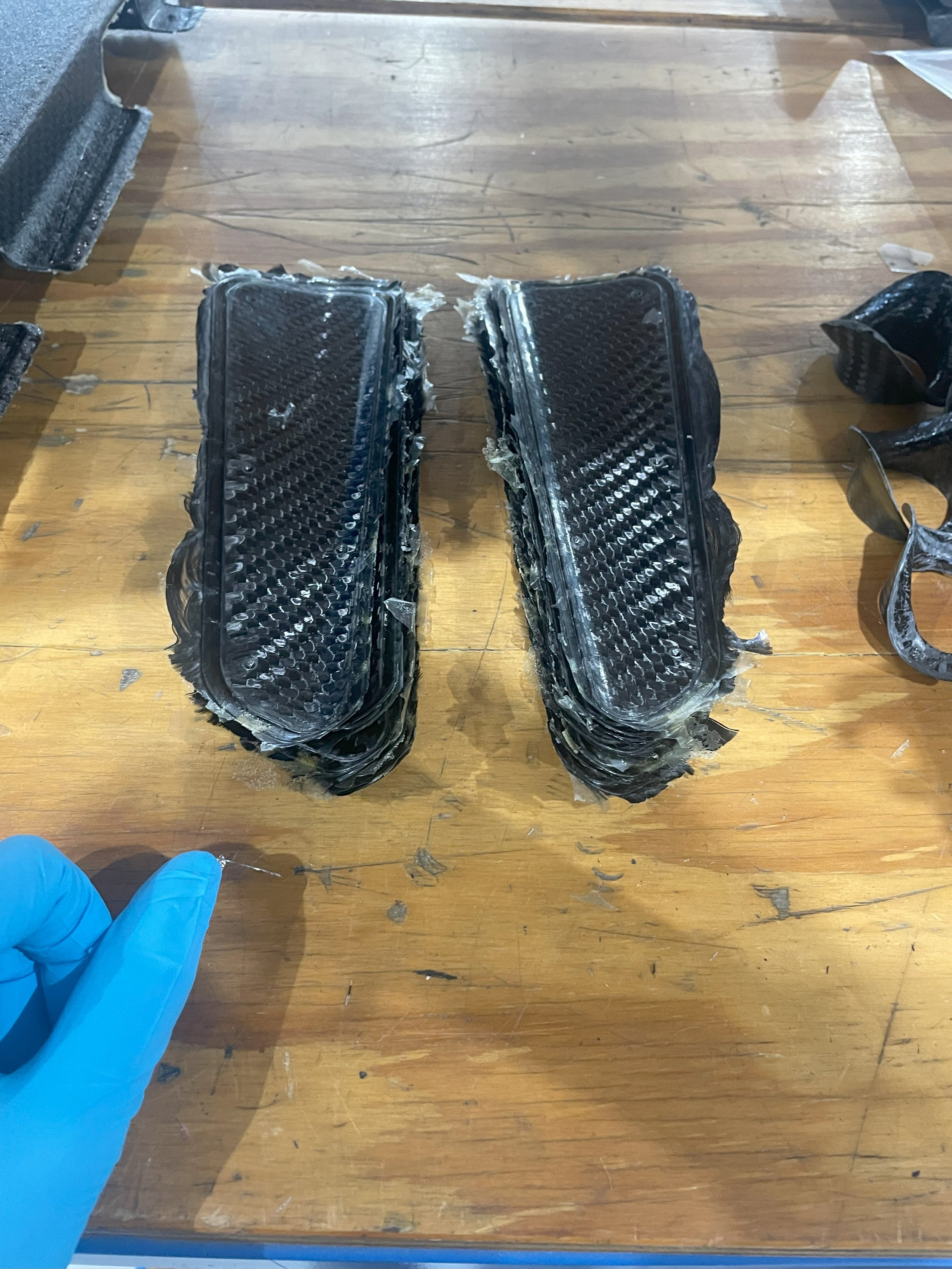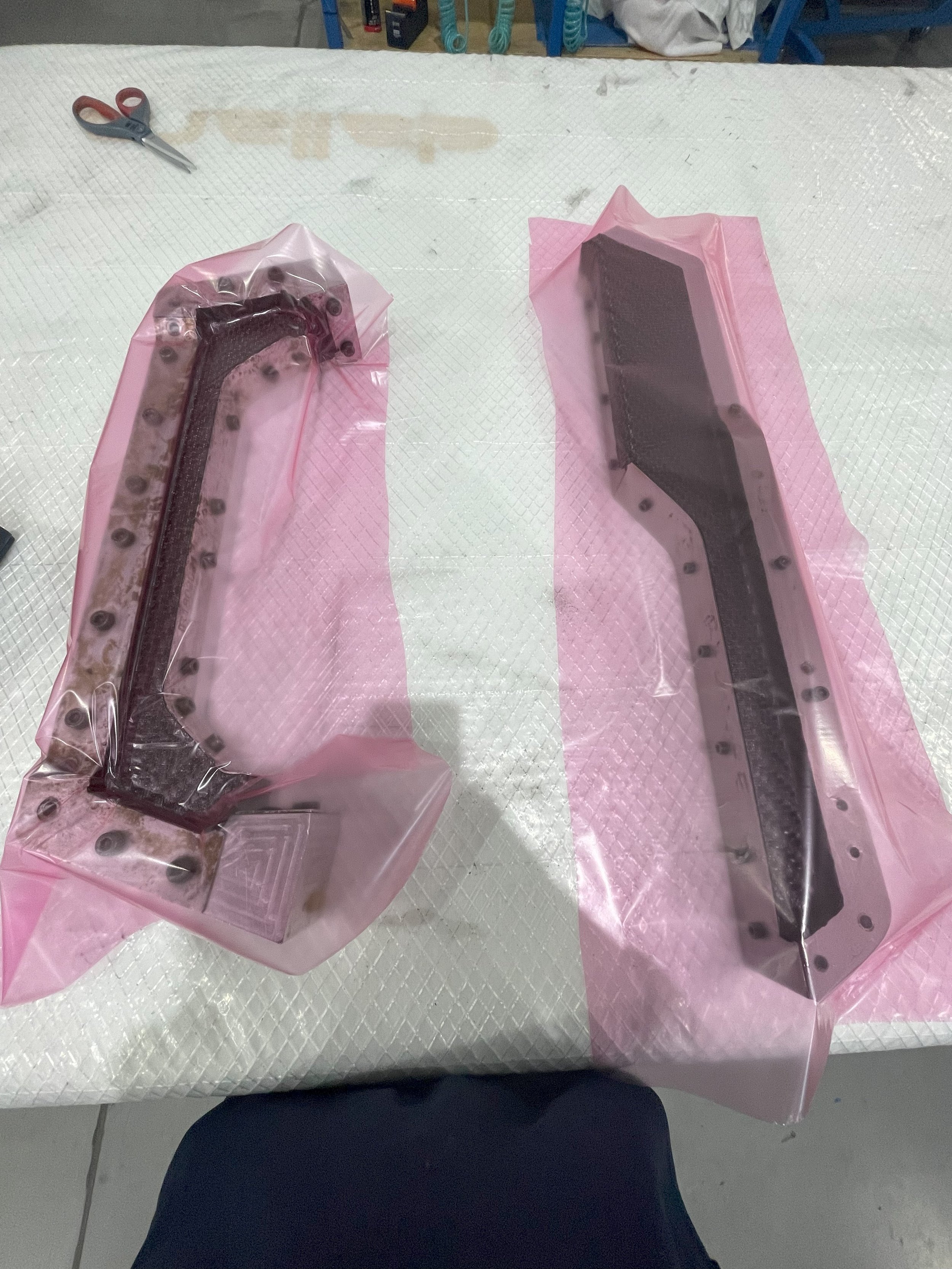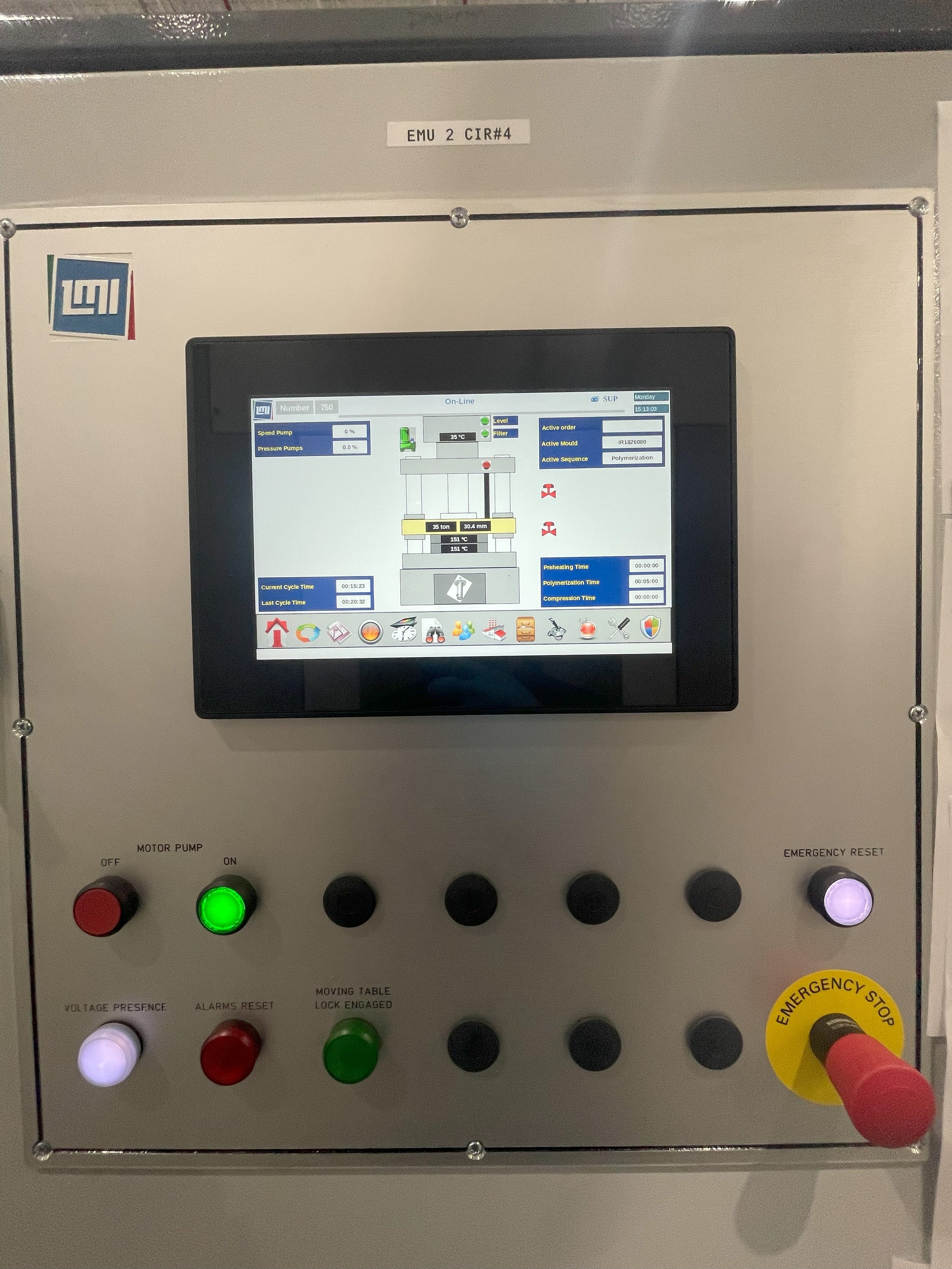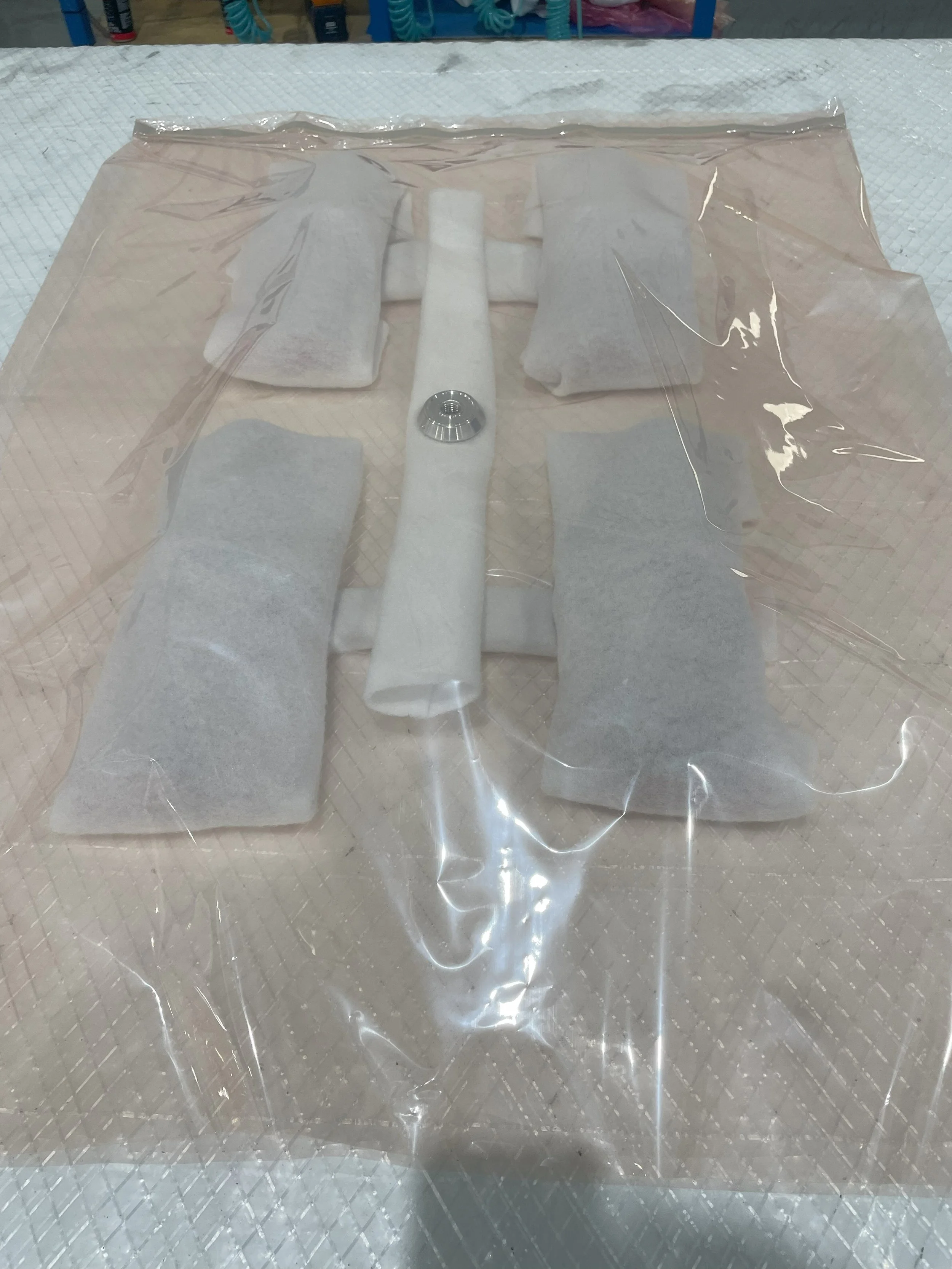Carbon Fiber
In my time at Dallara I primarily moved between manufacturing carbon parts and assembling an IR12 show-car as parts came in. This combined experience gave me confidence to under go the challenge of designing and manufacturing an underfloor for my capstone project, now with the skills needed to produce professional level carbon fiber parts
Dallara
Summer 2024
Cooling Ducts
These were the first parts I learned on. All Dallara parts are Prepreg carbon fiber. These cooling duct molds provide an easy edge to get started on but have small crevices near the center part of each mold; teaching you how to work edges and make patches when necessary. The part itself is 2 pieces, each made on one mold.
L: Carbon layed onto molds, 2 layers for each side. Groups of 4 was how I preferred to bag
R: Mold & part wrapped in release film and breather, then bagged. All parts musts have their breather connected to the central air vacuum, hence the H pattern.
L: Post curing in Autoclave, breather removed — release film visible
R: Parts released from mold and Film removed, trimming of resin flake from curing. Note the surface difference from the mold and non mold facing surfaces.
L/R: Final piece trimmed and joined
Front Wing Endplates, IR18 (Current Spec IndyCar).
These parts were unique in their manufacturing method, done in a press machine rather than the autoclave. This method of production is significantly faster, though the parts the machine can do are greatly limited by size and complexity.
L: Each Shape you see is 3 layers of fiber hand layered together, this is done on a table. The mold itself is inside of the press machine — with an upper and lower half — and is heated to very high temperatures. When placing the part onto the lower mold, you have about 10 seconds to position the part correctly before the resin begins to heat.
R: Control Panel for the press machine, this part ran for 20 minutes at 35 tons and 151 °C. In comparison this would take about 2 hours to cure in autoclave.
L/R: Cured parts still needing to be trimmed, press machine leads to more post work than autoclave due to expulsion of resin from the immense pressure
Interior Hip Panel/Unknown Interior Part, IR18 Indycar
These parts were the two most complicated parts I would manufacture. Both parts have numerous tight edges and corners, with short distances of material contact on the mold in certain places making it difficult to adhere the material to the mold. This also makes the process of wrapping the release film and the breather rather complex; you must leave enough material to be compressed; this is a further headache with the mold itself. Unlike the intake ducts, the molds do not have a flat bottom or sides, meaning you must also account for material relief all the way around the mold. This must also be taken into account with the final bagging. Additionally the resin used in these cloths are stickier, in combination with the deep corners and edges this also makes laying the material much more tedious.
L: Parts wrapped in release film prior to curing. Left is ready to go, right film is just layed on top. Notice the tension on the left release film in comparison to right and intake ducts. Relief cuts would be made to address potential issues.
R: Finished Part
L: Part bagged and hooked to vacuum, passed leak test and no tension issues, ready for autoclave
R: Cured parts, one in bag one still on mold
